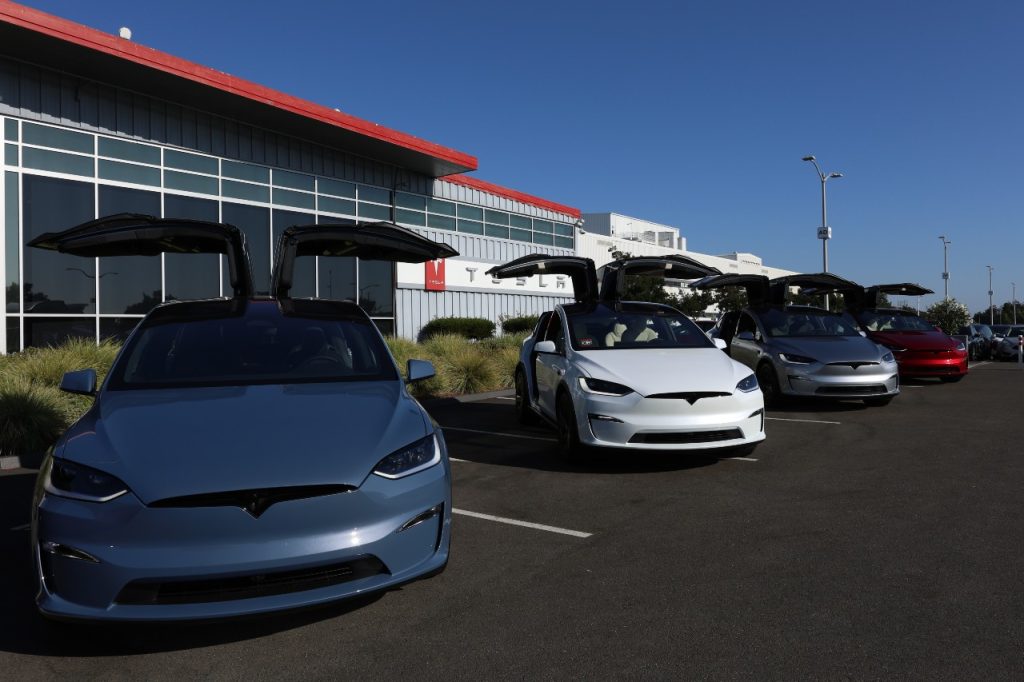
The sunsetting of a $7,500 Biden-era electric vehicle incentive drove a month of record sales this September, but as buyers and sellers prepare for an uncertain economic landscape, thousands of dollars in rebates and incentives still remain.
The tax incentive, which expired at midnight on Sept. 30, allowed buyers to receive up to $7,500 towards a new vehicle and $4,000 for a used vehicle. Passed under Biden’s Inflation Reduction Act, efforts to eliminate the subsidy began with President Trump’s Unleashing American Energy executive order in January 2025, which called for the elimination of “market distortions that favor EVs.” The early sunset of the rule sparked a nation-wide rush on electric vehicles for the month of September.
“ I was literally juggling three calls at one time for most of the day,” said Leo Beas, general manager at Rose Motorcars, a dealership that specializes in selling used electric vehicles in the Bay Area. Beas was processing IRS forms past close on Oct. 1 2025, before the federal incentive expired. He estimates that Rose City’s sales were roughly 60 percent higher than that of August, driven by the expiring incentive.
Now that the federal incentive has expired, Bay Area residents can still save over $12,000 on their purchase through a process called stacking. Stacking incentives allows residents to apply multiple rebate or point of sale programs at once to their vehicle purchase.
“ I’ve helped people that have saved up to $20,000 on an electric vehicle and sometimes even gotten it for free when they buy a used electric vehicle,” said Irvin Rivero, Beneficial Electrification Manager at Acterra, a Palo Alto-based non-profit which runs a program that helps connect consumers to electric vehicle incentives. While $20,000 in savings is harder to reach without the federal incentives, local incentives can still get buyers most of the way there.
“Without the incentives, we wouldn’t have been able to do it,” said Janean Felch, a Half Moon Bay resident, of her household’s first electric vehicle purchase. Felch estimates she received roughly $16,000 in stacked, regional rebates towards her used electric vehicle in December 2024. Her purchase excluded the federal incentive, since her planned purchase exceeded a $25,000 eligibility cap.
Felch received the most towards her purchase — $10,000 — through Clean Cars for All. The Clean Cars for All program allows income-qualified residents in the Bay Area Air District to trade in their older vehicle for up to $12,000 towards a plug-in hybrid, full electric, or hydrogen fuel cell vehicle. Recipients may also put the funds towards public transit. Applications for the Clean Cars for All program are open now until funds run out. The program runs yearly.
”Taking away the electric vehicle credit is not gonna stop us from connecting and helping people get into electric vehicles,” said Rivero. Acterra offers resources to help a buyer navigate incentives. Other popular incentive programs can be accessed through utility providers, such as PG&E and some Community Choice Aggregates or CCAs.
For the EV market overall, experts remain positive that while federal support for electric vehicles has stalled, the electric vehicle transition will continue. “ The demand in California is a preference based, market driven demand that was accelerated by federal incentives,” says Michelle Levinson, Senior Manager of eMobility Finance & Policy with the US Energy Program at the World Resources Institute. “So we could expect the rate of increase to decrease but not the transition overall.”
As for Beas at Rose Motorcars, he is holding off on buying more vehicles until he has a better idea for how the market is behaving. Prices so far are expected to drop. As for the consumer, local and regional incentives are here to stay, for now.

